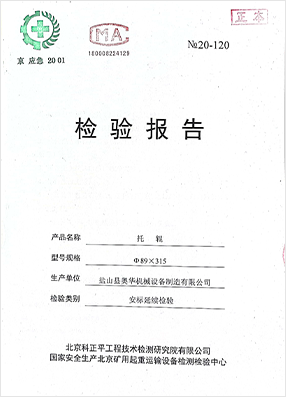 Afrikaans
Afrikaans  Albanian
Albanian  Amharic
Amharic  Arabic
Arabic  Armenian
Armenian  Azerbaijani
Azerbaijani  Basque
Basque  Belarusian
Belarusian  Bengali
Bengali  Bosnian
Bosnian  Bulgarian
Bulgarian  Catalan
Catalan  Cebuano
Cebuano  Corsican
Corsican  Croatian
Croatian  Czech
Czech  Danish
Danish  Dutch
Dutch  English
English  Esperanto
Esperanto  Estonian
Estonian  Finnish
Finnish  French
French  Frisian
Frisian  Galician
Galician  Georgian
Georgian  German
German  Greek
Greek  Gujarati
Gujarati  Haitian Creole
Haitian Creole  hausa
hausa  hawaiian
hawaiian  Hebrew
Hebrew  Hindi
Hindi  Miao
Miao  Hungarian
Hungarian  Icelandic
Icelandic  igbo
igbo  Indonesian
Indonesian  irish
irish  Italian
Italian  Japanese
Japanese  Javanese
Javanese  Kannada
Kannada  kazakh
kazakh  Khmer
Khmer  Rwandese
Rwandese  Korean
Korean  Kurdish
Kurdish  Kyrgyz
Kyrgyz  Lao
Lao  Latin
Latin  Latvian
Latvian  Lithuanian
Lithuanian  Luxembourgish
Luxembourgish  Macedonian
Macedonian  Malgashi
Malgashi  Malay
Malay  Malayalam
Malayalam  Maltese
Maltese  Maori
Maori  Marathi
Marathi  Mongolian
Mongolian  Myanmar
Myanmar  Nepali
Nepali  Norwegian
Norwegian  Norwegian
Norwegian  Occitan
Occitan  Pashto
Pashto  Persian
Persian  Polish
Polish  Portuguese
Portuguese  Punjabi
Punjabi  Romanian
Romanian  Russian
Russian  Samoan
Samoan  Scottish Gaelic
Scottish Gaelic  Serbian
Serbian  Sesotho
Sesotho  Shona
Shona  Sindhi
Sindhi  Sinhala
Sinhala  Slovak
Slovak  Slovenian
Slovenian  Somali
Somali  Spanish
Spanish  Sundanese
Sundanese  Swahili
Swahili  Swedish
Swedish  Tagalog
Tagalog  Tajik
Tajik  Tamil
Tamil  Tatar
Tatar  Telugu
Telugu  Thai
Thai  Turkish
Turkish  Turkmen
Turkmen  Ukrainian
Ukrainian  Urdu
Urdu  Uighur
Uighur  Uzbek
Uzbek  Vietnamese
Vietnamese  Welsh
Welsh  Bantu
Bantu  Yiddish
Yiddish  Yoruba
Yoruba  Zulu
Zulu types of conveyor idlers
Understanding Types of Conveyor Idlers
Conveyor systems are integral components in various industries, facilitating the smooth, efficient transport of materials and goods. A crucial part of these systems is the conveyor idler, which plays a vital role in the overall performance and longevity of the conveyor belt. This article delves into the different types of conveyor idlers, their functions, and their importance in conveyor system design.
What is a Conveyor Idler?
A conveyor idler is a cylindrical roller that supports the belt and assists in its movement across the conveyor system. Idlers significantly reduce friction, ensuring that the belt operates smoothly while carrying load. They are strategically placed along the length of the conveyor line and come in various configurations, depending on the type of cargo being transported and the operating conditions.
Types of Conveyor Idlers
1. Impact Idlers
Impact idlers are designed to absorb the energy of falling materials, minimizing the risk of damage to the conveyor belt. They are typically installed at loading points or where materials are dropped onto the belt. These idlers are equipped with specially designed rubber or other cushioning materials that help mitigate shock and wear.
2. Return Idlers
As the name suggests, return idlers are located on the return side of the conveyor system, supporting the belt as it returns to the loading point. These idlers help maintain the belt’s tension and alignment, ensuring it remains in the correct position. Return idlers often come in a flat design, allowing the belt to lie flat as it travels back to the start.
3. Carrying Idlers
Carrying idlers, also referred to as troughing idlers, support the load-carrying portion of the belt. They typically have a tilted design, commonly at angles of 20° to 45°, which allows for better material containment and helps prevent spillage. These idlers enhance the belt's stability and support a larger load area.
Training idlers are utilized to keep the conveyor belt aligned and prevent it from mis-tracking. These idlers are installed at strategic locations along the conveyor system, including the tail and head sections. They play a fundamental role in maintaining the belt’s correct position, ensuring efficient material transport.
types of conveyor idlers

5. Self-Aligning Idlers
Self-aligning idlers are a subtype of training idlers. They automatically adjust the position of the conveyor belt when it starts to misalign. This feature is particularly helpful in environments where the load may shift or where conveyor systems operate at steep angles.
6. Guide Rollers
Guide rollers are used to support the edges of the conveyor belt to prevent it from fraying or separating. They are crucial in applications where the belt might be subject to lateral forces, as they help stabilize the belt edge and maintain proper alignment.
7. High-Temperature Idlers
Industries such as steel or glass production often require the transport of materials at high temperatures. High-temperature idlers are designed to withstand these challenging conditions without degrading, ensuring the conveyor system remains efficient and reliable.
8. Heavy-Duty Idlers
For heavy or bulk materials, heavy-duty idlers are employed. They are constructed from robust materials and can withstand significant weights and harsh conditions, making them ideal for mining or aggregate applications.
Importance of Choosing the Right Idler
Selecting the appropriate type of conveyor idler is essential for optimizing operational efficiency. The right idler can enhance belt performance, reduce wear and tear, lower maintenance costs, and prolong the lifespan of the conveyor system. It's crucial to consider the specific requirements of the application, such as load size, speed, material type, and environmental conditions when choosing idlers.
Conclusion
In summary, conveyor idlers are a fundamental component of conveyor systems, varying widely in design and application. Understanding the different types of idlers available—notably impact, return, carrying, training, self-aligning, guide, high-temperature, and heavy-duty idlers—helps in selecting the right solution for specific material handling challenges. Making informed choices regarding conveyor idlers will lead to enhanced performance, reduced maintenance, and increased productivity across various industries.
-
Revolutionizing Conveyor Reliability with Advanced Rubber Lagging PulleysNewsJul.22,2025
-
Powering Precision and Durability with Expert Manufacturers of Conveyor ComponentsNewsJul.22,2025
-
Optimizing Conveyor Systems with Advanced Conveyor AccessoriesNewsJul.22,2025
-
Maximize Conveyor Efficiency with Quality Conveyor Idler PulleysNewsJul.22,2025
-
Future-Proof Your Conveyor System with High-Performance Polyurethane RollerNewsJul.22,2025
-
Driving Efficiency Forward with Quality Idlers and RollersNewsJul.22,2025





























